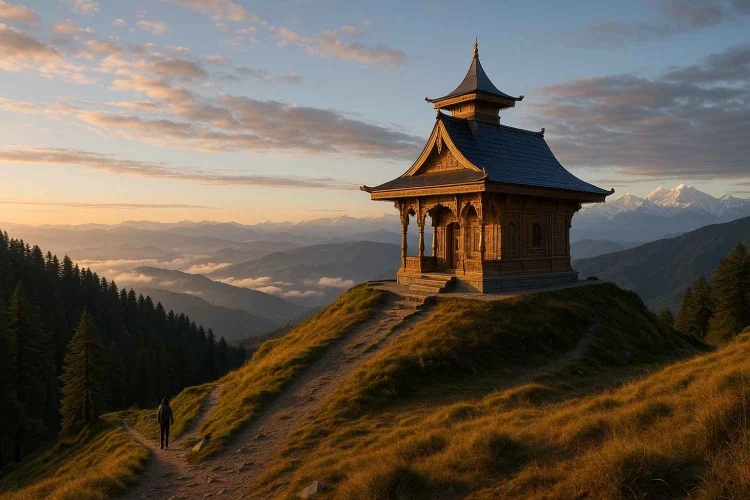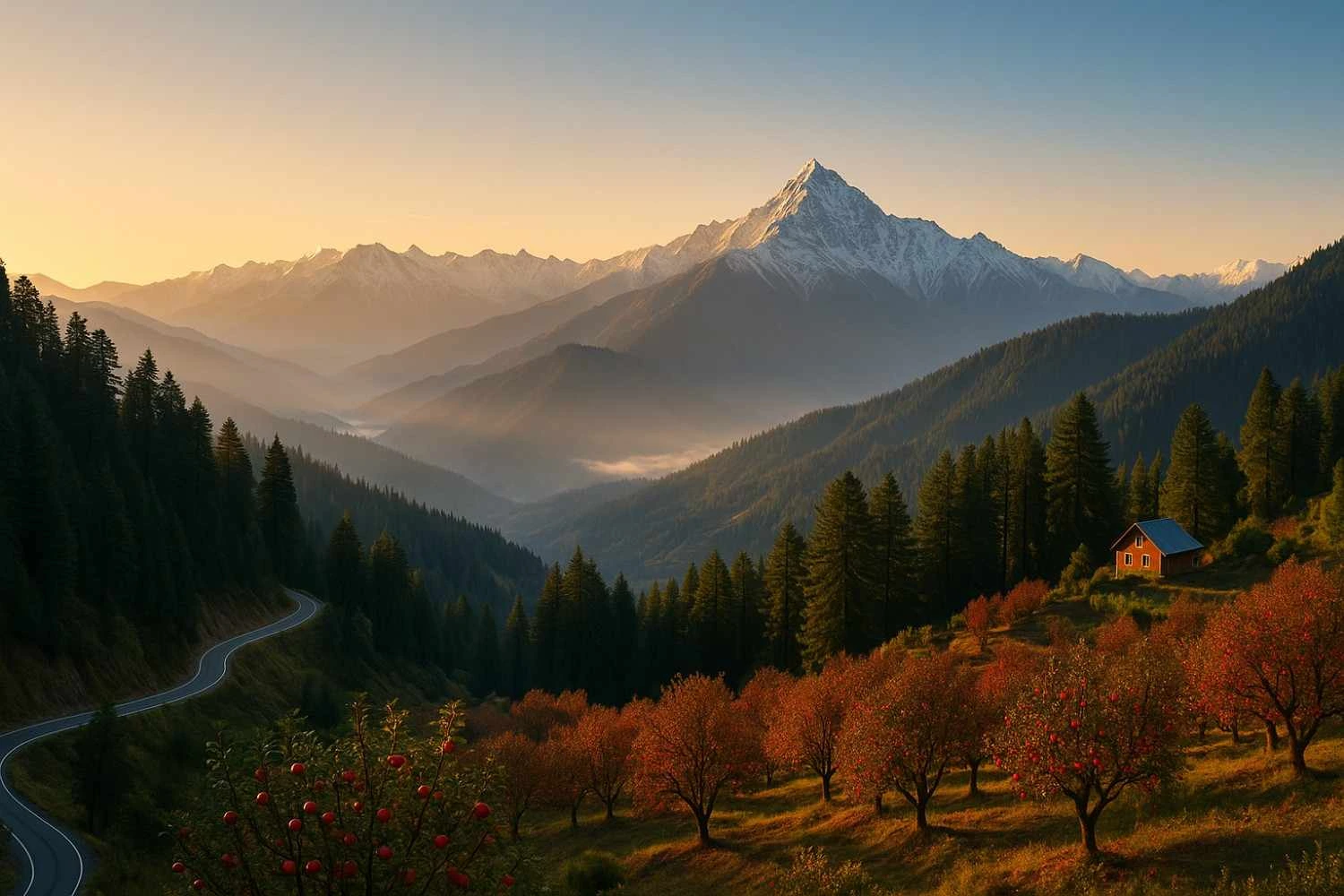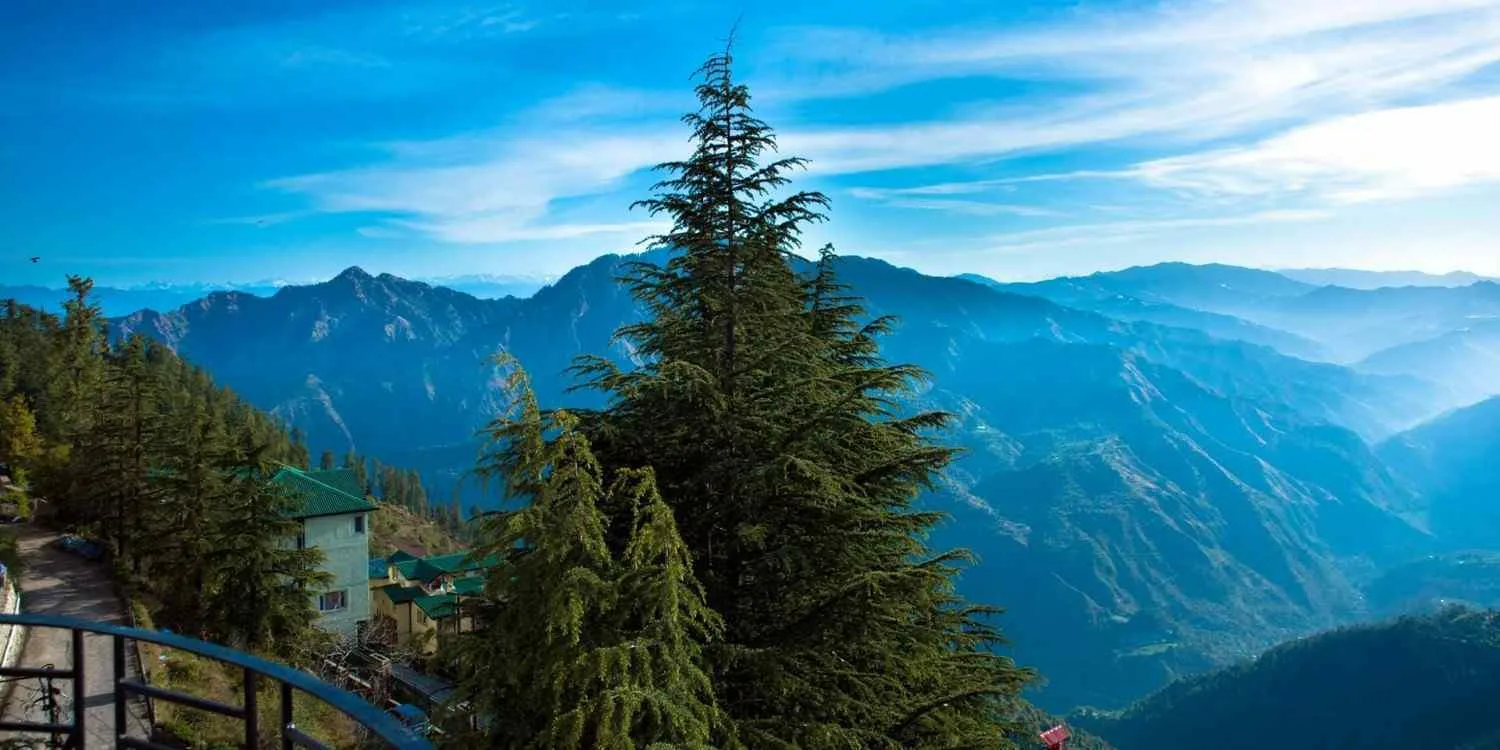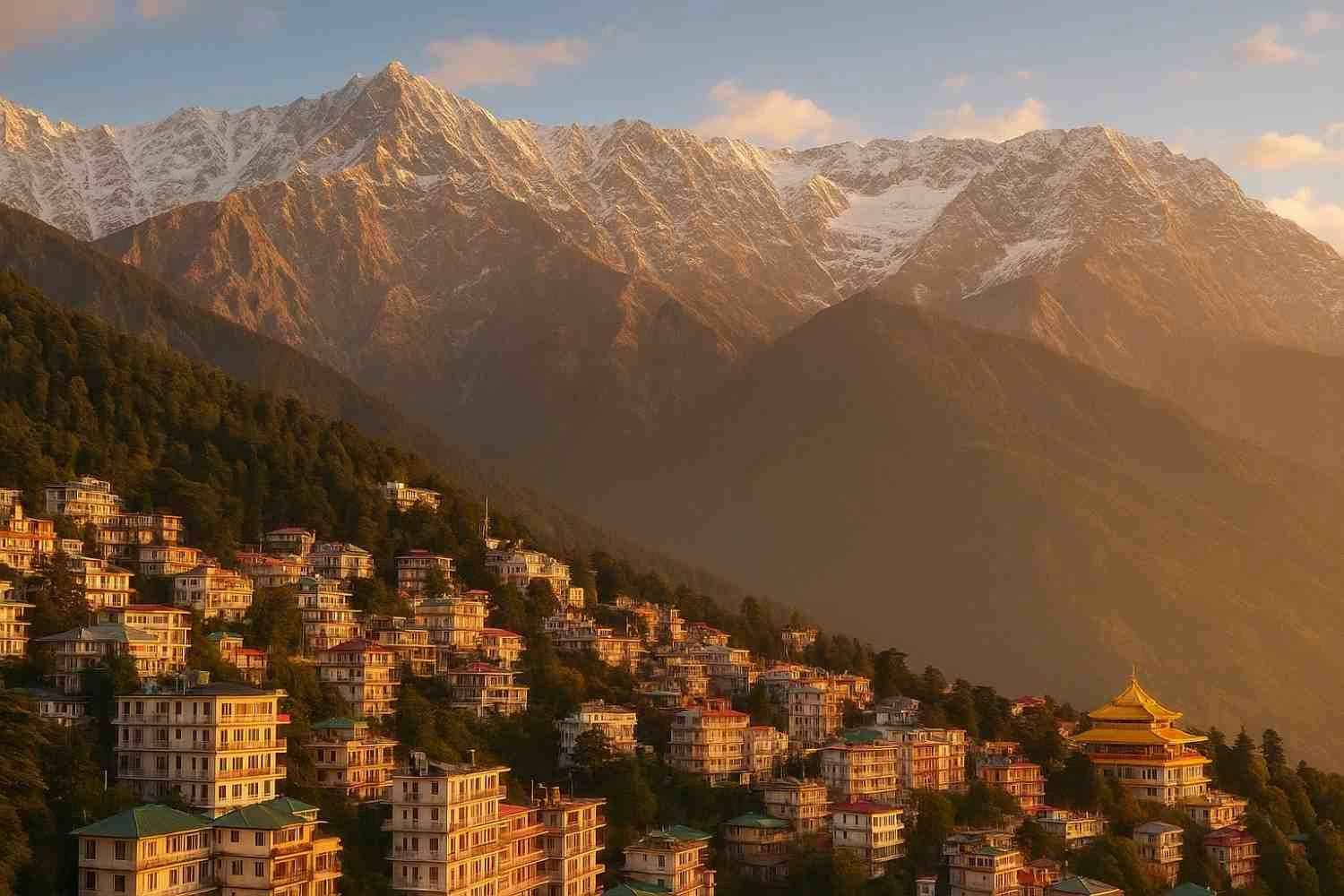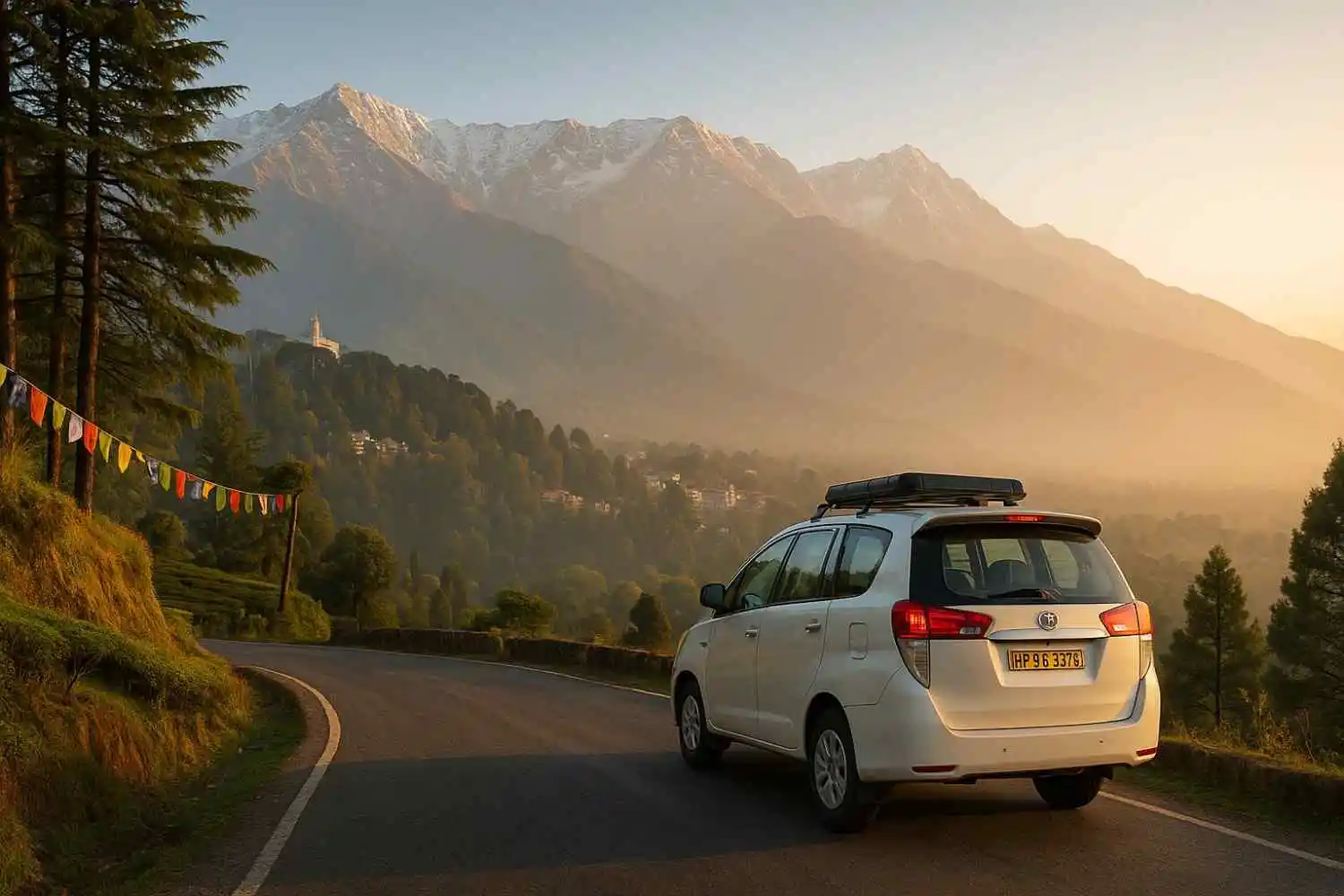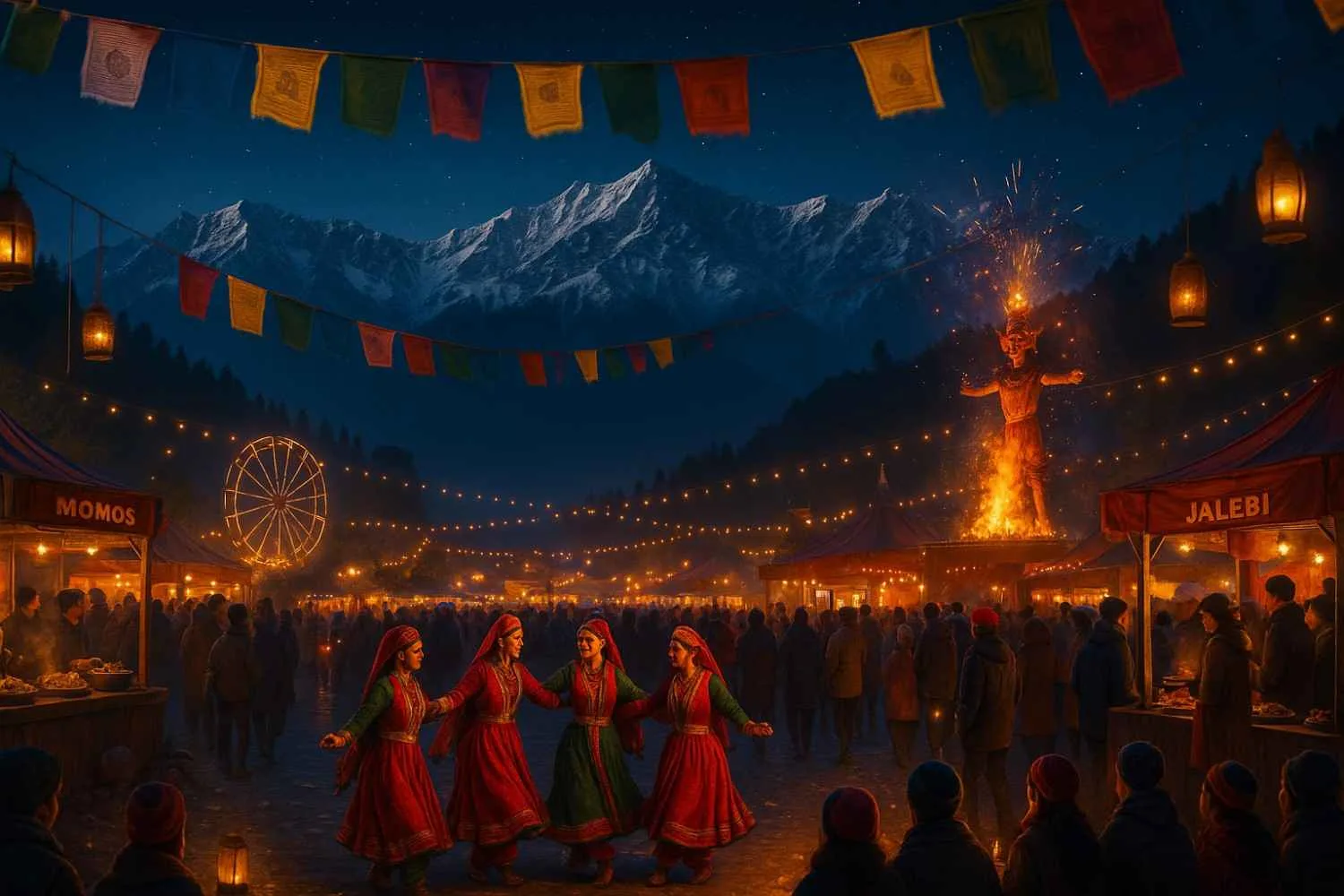If your mountain goals include a soul-soothing day hike, big-screen views, and just enough altitude to feel the Himalayan thrill—without committing to a multi-day expedition—Hatu Peak Trek Narkanda, Himachal Pradesh, fits like a glove. Rising above the orchard town of Narkanda in the Shimla district, Hatu Peak (≈3,400 m/11,000 ft) is the area’s highest point and a beloved vantage over the Pir Panjal, Kinner Kailash, and Shrikhand ranges on clear days.
What makes this trek special is the blend of forest calm and cultural grace. The trail climbs steadily through deodar and oak, opens to occasional meadows and viewpoints, and tops out beside the beautifully carved Hatu Mata Temple, a wooden jewel that radiates Himachali craftsmanship. You get adventure, nature, and a touch of spirituality in one compact, beginner-friendly package that suits weekenders from Shimla, families, and first-time trekkers dipping their toes into the high hills.
This in-depth guide packs everything you need to plan the perfect outing: route details, the best season, logistics, packing, photography tips, nearby attractions, and a practical FAQ—all optimized for travelers searching for Hatu Peak Trek, Narkanda, Himachal Pradesh.
About Hatu Peak Trek
- Location: Shimla district, Himachal Pradesh, above Narkanda.
- Highest point: ≈ 3,400 m / 11,000 ft—the tallest in the immediate region.
- Cultural crown: The summit hosts the revered Hatu Mata Temple dedicated to Goddess Kali (Hatu Mata), reflecting local devotion and traditional architecture.
- Why it stands out: The trek offers a gradual forest ascent, frequent view windows, and a panoramic summit—all within a day trip from Shimla.
The Experience in a Nutshell
Expect a 2–3 hour ascent (fitness dependent) on a well-trodden mountain road/trail that snakes up from Narkanda. In spring, apple blossoms splash color at lower elevations; in summer, the forest smells of resin and earth; in autumn, the air turns crisp with long-range clarity; in winter, the trail wears a snow-white hush. At the top, the temple bells and wind join into a soundtrack that’s equal parts serene and stirring.
Hatu Peak Trek Route Overview
| Point | Details |
| Starting Point | Narkanda Market / turn-off to Hatu Temple Road |
| Distance | ~7 km round trip (varies by exact start/turnaround) |
| Duration | 2–3 hours (one way); 4–6 hours round trip with breaks |
| Difficulty Level | Easy to Moderate (steady gradient; can feel tougher in snow or rain) |
| Highest Altitude | 11,000 ft (≈3,400 m) |
| Trail Type | Forest path / motorable mountain road in sections; gradual ascent with hairpins |
Many visitors drive partway up the narrow Hatu Peak road in dry weather and then walk the final stretch. If you’re new to mountain driving or conditions are slippery, park lower and trek—safer and far more enjoyable.
Step-by-Step Hatu Peak Route Description
- Narkanda Market (≈2,700 m):
Pick up snacks, water, and last-minute essentials. The Hatu Peak road begins near the market; ask locals for the latest on traffic or snow conditions.
- Initial Forest Ascent:
The road curls quickly into deodar and oak. You can either walk along the road edges (watch for vehicles) or hop onto parallel footpaths that locals use to shortcut switchbacks. The gradient is steady but forgiving.
- Midway Clearings & View Windows:
After 30–45 minutes, you reach small meadows and gaps in the treeline. These are perfect for water breaks, photos, and catching your breath. On clear days, distant snow ridges tease the horizon.
- Final Push to the Ridge:
The last kilometer steepens slightly as the ridge draws near. Take it slow if you feel the altitude; breathe and maintain a conversational pace. In winter, this section can be icy—microspikes or trekking poles help.
- Summit Area & Hatu Mata Temple:
The ridge opens suddenly, gifting 360° panoramas. Spend time at the Hatu Mata Temple (remove shoes, keep voices low), then wander to nearby knolls for alternate angles and quieter viewpoints.
- Descent:
Most trekkers descend the same way. Save 30–45 minutes for photos and careful footing—downhill strain is easy to underestimate, especially on loose gravel or snow.
Scenic Highlights Along the Hatu Peak Trek
- Deodar & Oak Forests:
Cool shade, filtered light, and that unmistakable cedar scent: nature’s aromatherapy.
- Meadows & Orchard Edges:
Near the base, the orchard belt lends color and seasonal life—blossoms in spring, fruiting in late summer.
- Himalayan Range Views:
On visibility days, you may spot segments of Shrikhand, Kinner Kailash, and the Pir Panjal—layered ridges marching to the horizon.
- Hatu Mata Temple:
A traditional Himachali wooden shrine with intricate carvings and a slate roof—photogenic from every angle. Please be respectful while shooting.
- Ridge-top Drama:
Clouds tumble, shadows lengthen, and light changes by the minute at 11,000 ft—it’s a photographer’s classroom.
Pro tip: Post-monsoon (late Sep–Nov) often delivers the longest sightlines with crisp air and fewer crowds.
How to Reach Hatu Peak
- By Road: ~70 km from Shimla via NH5 → Narkanda. The final ascent follows the Hatu Temple Road.
- By Train: Shimla is the nearest railhead (narrow-gauge from Kalka); then continue by road to Narkanda.
- By Air: Jubbarhatti (Shimla) Airport ~85 km away; Chandigarh is a larger alternative with better connectivity.
- Local Transport: Taxis are readily available in Shimla and Narkanda. Self-drive is common; just drive slowly on hairpins and yield at narrow passes.
Driving Note: The Narkanda → Hatu Peak stretch is steep and narrow, sometimes with ice in winter and fallen needles that can be slick. If in doubt, park below and trek.
Hatu Peak Trek Weather, Altitude & Safety
- Altitude: At ~3,400 m, most healthy travelers manage fine, but pace yourself. Shortness of breath is normal—go slow, sip water, and take breaks.
- Sun Exposure: UV is stronger at elevation. Use sunscreen, sunglasses, and a cap even on cool days.
- Winter Conditions: Expect snow/ice. Wear waterproof shoes, warm layers, and consider microspikes + poles for grip.
- Monsoon Hazards: Slippery surfaces, fog, and leeches in dense patches—carry a rain shell and avoid risky shortcuts.
- Phones & Network: Coverage can be patchy near the top; download offline maps.
What to Pack for Hatu Peak Trek
- Trekking shoes with a reliable grip (water-resistant in winter/monsoon)
- Layered clothing: base tee, warm jacket/fleece, lightweight wind/rain shell
- Woollen cap & gloves (winter/shoulder seasons)
- 1–2 L water, light snacks (nuts, fruits, energy bars)
- Daypack with rain cover
- Sunscreen, sunglasses, lip balm
- Basic first aid: band-aids, crepe bandage, pain relief, personal meds
- Trekking poles (optional but helpful on descent or snow)
- Camera/phone for those sweeping views; carry a power bank
- Trash bag: Pack out everything you bring in
Hatu Peak Trek Sample Itineraries
1) Day Trip From Shimla
- 05:30–06:00: Start for Narkanda; breakfast stop en route
- 09:00: Reach Narkanda; stock up on water/snacks
- 09:30–12:00: Trek to Hatu Peak at an easy pace
- 12:00–13:30: Temple visit + ridge exploration + photos
- 13:30–15:00: Descend to base
- 15:30–17:00: Detour to Tani Jubbar Lake (optional)
- 17:00 onwards: Return drive to Shimla
2) Overnight in Narkanda (Slow & Scenic)
- Day 1: Shimla → Narkanda check-in → Tani Jubbar Lake stroll → sunset recce
- Day 2: Early trek to Hatu Peak for sunrise → brunch in town → orchard visit (in season) → return
Photography Tips for Hatu Peak
- Golden Hours Rule: Aim for sunrise or late afternoon; the ridge glows and the ranges pop with depth.
- Bring a Wide: 14–24 mm (full frame) for sweeping panoramas; 50 mm for temple details; 70–200 mm to compress distant ridges.
- Filters: A circular polarizer controls glare from slate roofs and saturates skies. Be cautious with reflections if clouds are dramatic.
- Tripod: Helpful for blue hour and bracketed landscape exposures.
- Respect: Avoid flash inside/near the sanctum; ask before photographing people.
Hatu Peak Trek Nearby Attractions
- Tani Jubbar Lake: An oval, mirror-calm lake fringed by deodar and apple orchards—perfect for a picnic or reflection photos.
- Apple Orchards (Kotgarh–Thanedar): Blossom walks in spring, fruit picking/buying in late summer/early autumn.
- Stokes Farm: A heritage estate central to the region’s apple story—great for understanding local horticulture.
- Narkanda Market: Browse woolens, wooden handicrafts, and homemade preserves; sip hot chai and chat with locals.
Food, Water & Rest Stops
- On the trail: Limited or no shops. Carry your own water and snacks.
- In Narkanda: Small cafés and dhabas serve hearty parathas, rajma-chawal, maggi, momos, and tea.
- Responsible hydration: Refill bottles at your stay or known safe sources; avoid single-use plastic where possible.
Responsible Trekking
- Leave no trace: Pack out all trash, including fruit peels and tissue.
- Stick to paths: Protect fragile forest floor and avoid erosion.
- Quiet near the temple: Remove shoes, keep music off, and dress modestly.
- Buy local: Choose homestays, eat at local cafés, and pick up farm products to support the community.
- No fires: The forest is vulnerable—open flames are a strict no.
Cost Snapshot (Indicative)
- Shimla ↔ Narkanda taxi (return): ₹3,500–₹5,500 depending on vehicle/season
- Narkanda stay (budget–mid): ₹1,200–₹4,000 per room per night
- Meals: ₹200–₹500 per person per meal at local cafés
- Guide (optional): ₹1,000–₹2,000 for the day if you prefer a local expert
(Prices fluctuate by season and availability.)
Travel Tips for Hatu Peak Trek
- Start early for cooler temps and stable visibility.
- Hydrate steadily; altitude plus sun can sneak up on you.
- Check the weather—especially for snow treks; carry microspikes if ice is expected.
- Drive carefully: horn at blind curves, yield on narrow sections, avoid night descents in fog.
- Temple etiquette: respect local customs and signage.
Conclusion
Compact, beautiful, and steeped in quiet reverence, the Hatu Peak Trek, Narkanda, Himachal Pradesh, is a hidden-in-plain-sight gem. The forested ascent eases you into the rhythm of the mountains; the summit temple and wide horizons reward you with a calm that lingers long after the hike. For weekend travelers from Shimla, families seeking a nature day, or beginners wanting a first Himalayan trek, Hatu Peak is the perfect choice—adventure, serenity, and spiritual energy wrapped into one ridge.
FAQs
Where is Hatu Peak located in Himachal Pradesh?
Hatu Peak rises above Narkanda in the Shimla district of Himachal Pradesh, India—about 70 km from Shimla via NH5.
How difficult is the Hatu Peak Trek?
It’s easy to moderate. The gradient is steady, the path is clear, and fit beginners manage comfortably. It can feel tougher in snow, rain, or fog.
What is the best time to do Hatu Peak Trek?
April–June and October–November offer the best mix of weather and visibility. December–February is wonderful for snow treks (dress warm, check conditions). Monsoon (Jul–Sep) brings slippery trails and poor views.
How far is Hatu Peak from Narkanda?
Roughly 3–4 km by the upper road/footpath to the summit area, depending on where you start. The trek described here totals about 7 km round trip from common starting points.
Can beginners do the Hatu Peak Trek?
Yes—first-timers regularly complete it. Walk at an easy pace, carry water, and take short breaks. In winter, add warm layers and shoes with good grip
Is there snowfall at Hatu Peak in winter?
Often yes. Snow transforms the forest and ridge into a winter postcard. After fresh falls, the road can be icy or temporarily closed—always check locally.
What are the main attractions at the Hatu Peak summit?
The Hatu Mata Temple, 360° Himalayan panoramas, dramatic cloudscapes, and a sense of peace unique to high ridges.
Are there homestays or hotels near Narkanda?
Plenty. You’ll find homestays, guesthouses, and small hotels across budgets in and around Narkanda. Book ahead during blossom and snow seasons.
How long does it take to reach Hatu Mata Temple on foot?
Typically 2–3 hours one way at a relaxed pace, longer if you stop often for photos or in snow.
Is the Hatu Peak Trek suitable for families or kids?
Yes for active families with kids who enjoy walking. Keep an eye on footing, carry snacks/water, and avoid the steepest shortcuts. In winter, pick milder weather windows.
